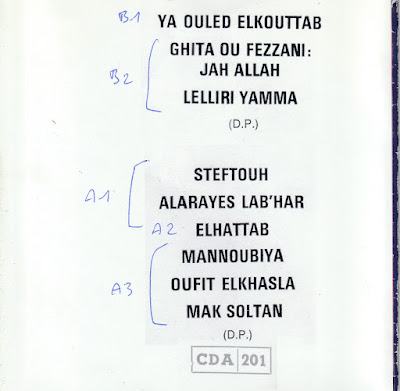TRADITIONAL FOLK MUSIC & BALLADS OF THE MALTESE ISLANDS
Anthony d'Amato, ?; ADC 7008
Malta is an archipelago made of three islands : Malta the biggest one, Gozo (Ghawdex) and between these two the smallest one Comino (Kemmuna). The language is semitic with a lot of other influences mainly Italian. Lying south of Sicily, Maltese traditional music sounds partly like Southern Italian music with a repertoire of ballads sung in Maltese with guitar accompaniment. On this tape the guitar is also a solo instrument. But this tape is quite disappointing because of the total lack of information; no names and even the number of tracks is wrong : there are twelve of them listed but there are sixteen tracks really. But maybe I made mistakes in digitizing.
Most of them are ballads sung by men with guitar in the local style which is quite distinctive. The other tracks are guitar music sounding more modern. There are other types of music in Malta especially bagpipe (zaqq) music. The violin was in use too.
The sound recording is not always good and the whole lot looks like a compilation.
Anthony d'Amato seemed to have been the only local label.







































